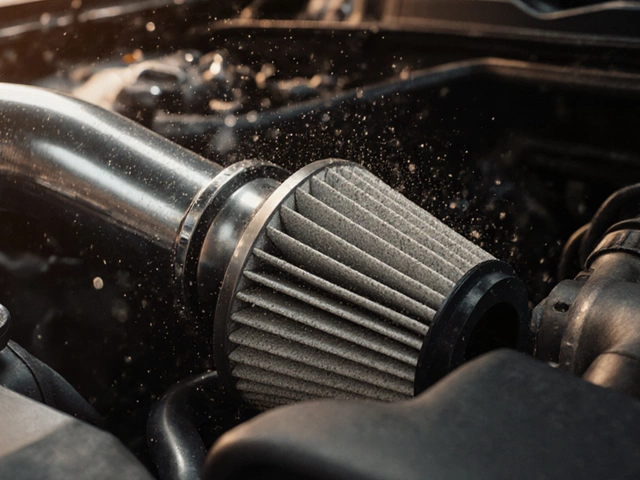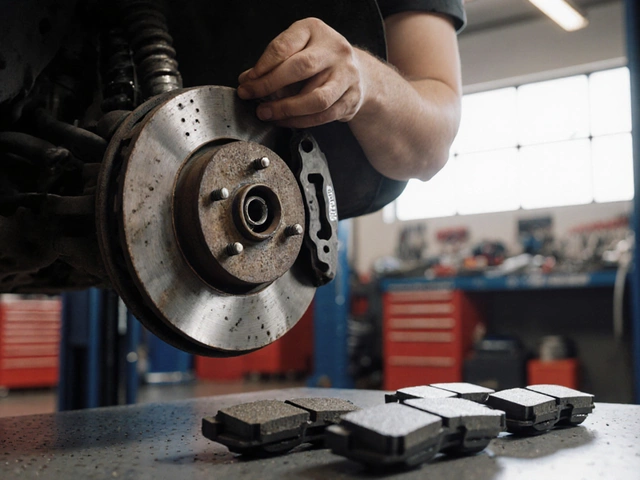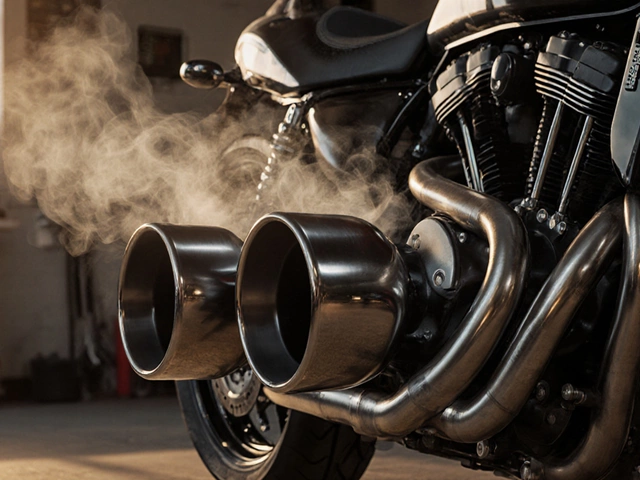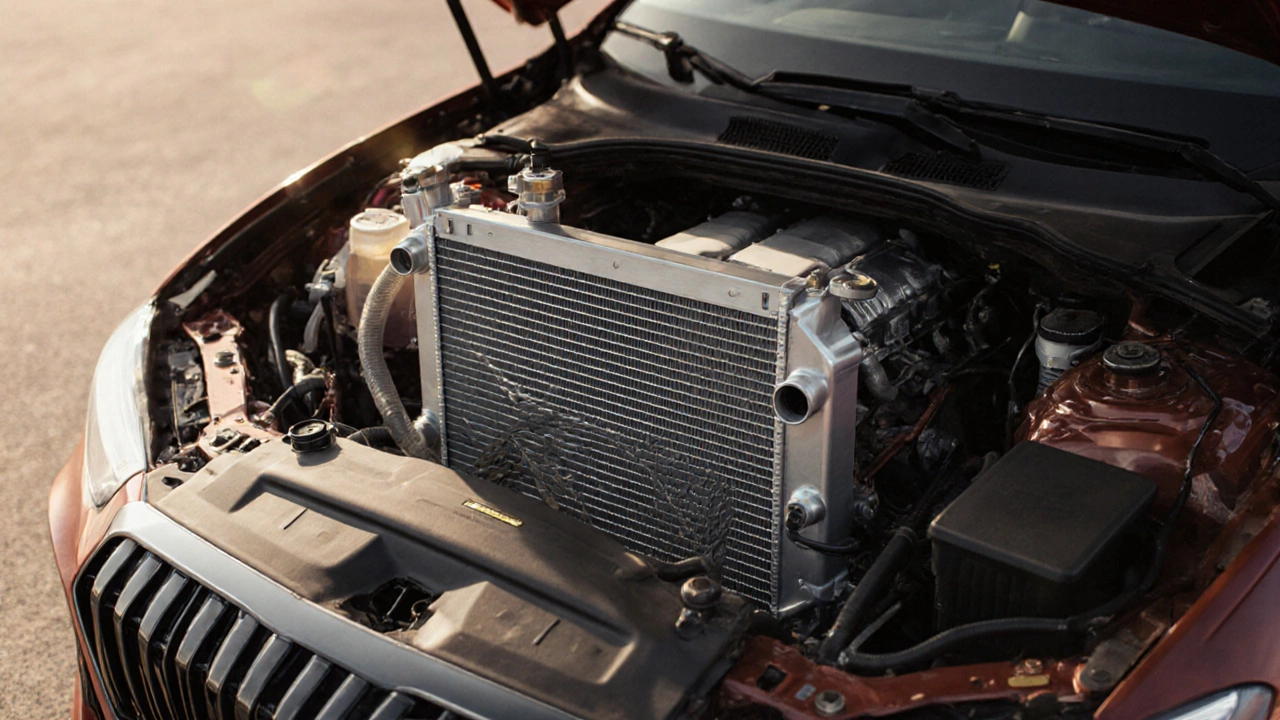
Radiator Replacement Calculator
Estimated Replacement Timeline
Your radiator is estimated to last until miles or years, depending on conditions.
Recommendation:
When the engine temperature gauge starts to climb, most drivers think about adding more coolant, but the real question is often: car radiator replacement - how often does a radiator actually need to be swapped out? Car radiator is a heat‑exchange device that removes excess heat from the engine coolant and dissipates it into the air. It sits at the front of the engine bay, behind the grille, and works nonstop whenever the engine runs.
Key Takeaways
- Typical radiator life ranges from 8years or 100,000-150,000miles, but climate and maintenance can shift that dramatically.
- Visible leaks, recurring overheating, or a constantly low coolant level are strong signals it’s time for a new unit.
- Aluminum radiators generally outlast plastic ones, while OEM parts tend to be more reliable than low‑cost aftermarket replacements.
- Regular coolant flushes, pressure checks, and fan inspections can add 20‑30% more life to a radiator.
- DIY replacement is doable with basic tools, but a professional install usually saves you from costly mistakes.
How a Radiator Fits Into the Cooling System
Understanding why a radiator fails starts with seeing it as part of a larger cooling system that circulates coolant through the engine, absorbs heat, and expels it via the radiator. The system includes a thermostat a valve that opens when coolant reaches a set temperature to allow flow to the radiator, a water pump an engine‑driven pump that forces coolant through the passages, a radiator fan electric or clutch‑driven blades that pull air through the radiator when vehicle speed isn’t enough, and a radiator cap a pressure‑regulating valve that maintains the system’s boiling point. When any of these components falter, the radiator works harder, accelerating wear.
What Makes a Radiator Wear Out?
Radiators aren’t magic; they degrade due to a mix of mechanical and chemical stressors:
- Corrosion - Most modern radiators use aluminum cores with plastic tanks. If the coolant’s pH drifts low, it eats away at the metal and causes leaks.
- Thermal fatigue - Repeated heating and cooling cause the thin fins to expand and contract, eventually warping or cracking.
- Physical damage - Rocks, curbs, or even a mis‑aligned bumper can dent the tank, creating weak spots.
- Coolant quality - Old or contaminated antifreeze loses its corrosion inhibitors, turning the radiator into a rust bucket.
- Improper pressure - A faulty cap lets the system run below its design pressure, lowering the boiling point and encouraging boiling‑off.
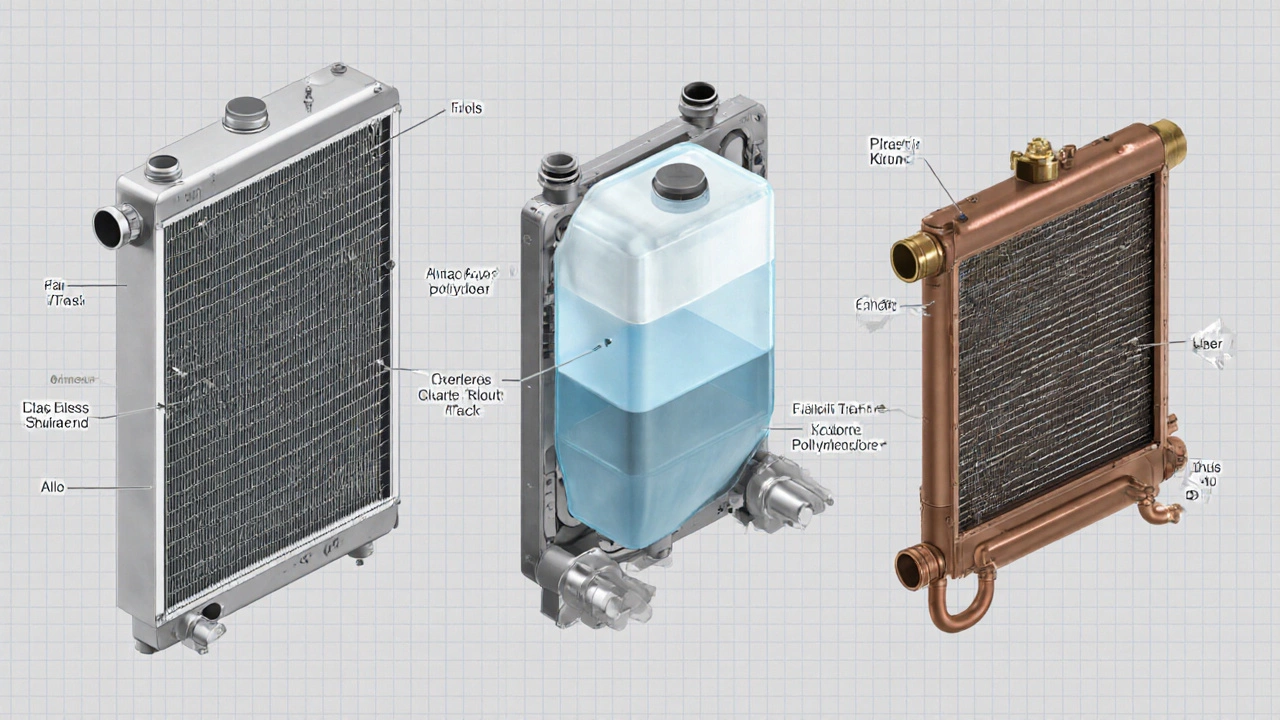
Signs It’s Time for a New Radiator
Don’t wait for a catastrophic failure. Keep an eye on these red flags:
- Persistent coolant loss without visible puddles - the radiator may be leaking internally.
- Engine temperature spikes that return quickly after a short drive - could mean the core is clogged or the fan isn’t pulling enough air.
- Steam or a sweet smell from the front of the car - classic evidence of an overheating radiator.
- Rusty or brown‑colored coolant in the reservoir - indicates internal corrosion.
- Visible rust or bulging in the radiator tank - aluminum tanks develop holes; plastic tanks can split.
Typical Replacement Intervals - Data‑Backed Estimates
Manufacturers rarely publish a hard "replace every X miles" rule because real‑world conditions vary. However, service data from major brands (Toyota, Ford, GM) and large fleet operators give us a reliable range:
- Average mileage: 100,000-150,000miles (≈160,000-240,000km).
- Average age: 8-10years for most passenger cars in temperate climates.
- Extreme climates: In hot, humid regions (southern US, parts of Asia) radiators can fail as early as 5years or 70,000miles. Cold, salty winters (northern US, Canada) can also accelerate corrosion, shaving a few years off.
- High‑performance vehicles: Sports cars that run at high RPMs often see radiator life drop to 60,000-80,000miles.
These numbers assume regular coolant changes (every 30,000-50,000miles) and no major collisions.
Radiator Types and Their Expected Lifespan
Not all radiators are created equal. The material and construction method dictate durability and cost.
| Type | Typical Lifespan | Cost (USD) | Pros | Cons |
|---|---|---|---|---|
| Aluminum core lightweight, high‑conductivity radiator | 9‑12years or 120,000‑150,000miles | $150‑$350 | excellent heat transfer, resistant to rust | higher upfront cost, can be damaged by severe impact |
| Plastic tank radiator with polymer reservoir | 6‑9years or 80,000‑110,000miles | $100‑$250 | cheaper, lighter, easier to shape | prone to cracking under extreme heat, less resistant to chemicals |
| Copper/Brass traditional, sturdy radiator construction | 10‑15years or 150,000‑200,000miles | $300‑$600 | very durable, classic appearance | heavy, more expensive, can still corrode if coolant is bad |
| OEM (Original Equipment Manufacturer) | Matches vehicle design - usually 8‑12years | $200‑$500 | exact fit, proven reliability | pricey compared to generic aftermarket |
| Aftermarket (generic) | Varies widely - 5‑10years | $80‑$250 | budget‑friendly, many options | fitment issues, inconsistent quality |
When budgeting, weigh the upfront cost against the projected lifespan. An extra $150 for an aluminum OEM unit often pays for itself in fewer visits to the shop.
Cost of Replacement and DIY vs. Professional Install
Labor is the biggest variable. A typical shop charges $100‑$200 for labor, plus the part price. DIY can shave $100‑$150 off the total, but you need the right tools: a socket set, a drain pan, a torque wrench, and a radiator pressure tester.
- DIY pitfalls: Forgetting to bleed air properly can cause new‑radiator overheating within weeks.
- Professional advantage: Certified techs have calibrated pressure testers and know the exact torque specs for your vehicle’s mounting bolts.
- Warranty considerations: Some OEM radiators come with a 2‑year warranty that’s void if you install them yourself.
If you’re comfortable with a jack, a few bolts, and a bit of patience, a DIY swap is doable on most sedans and coupes. Larger vehicles (trucks, SUVs) often have more complex routing for coolant hoses, making a professional job safer.
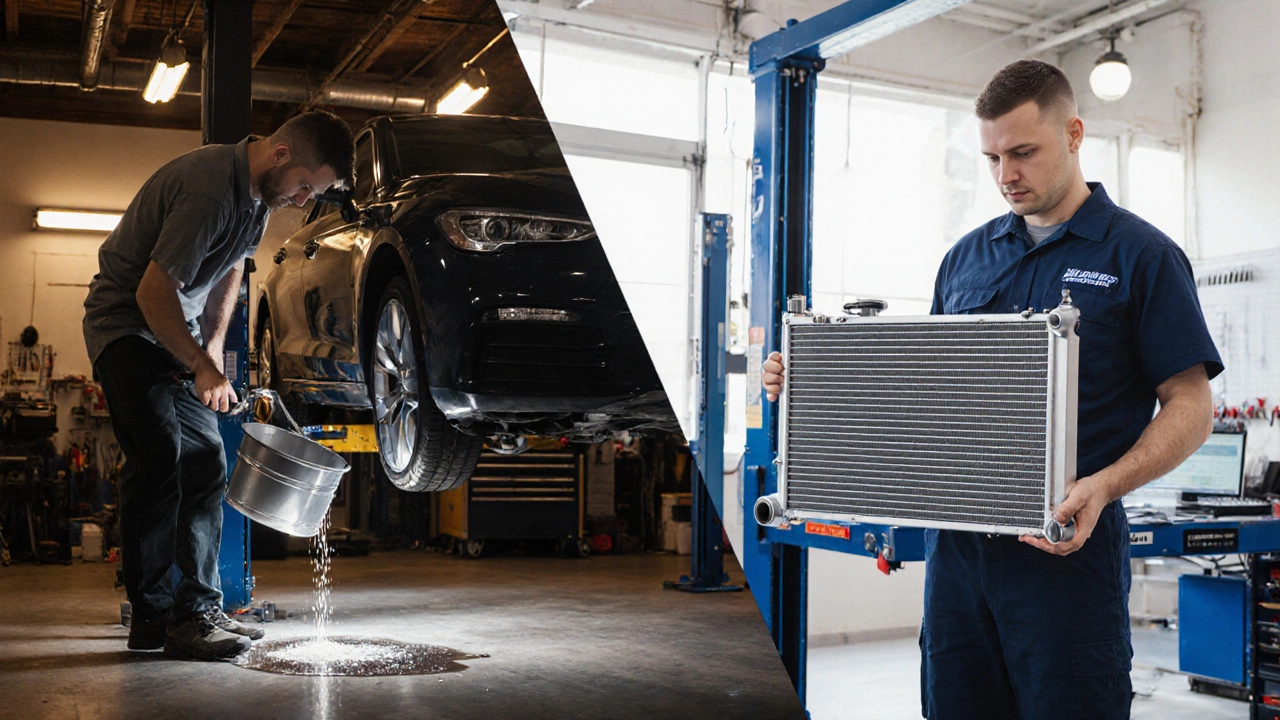
How to Extend Your Radiator’s Life
Even if you’re not ready to replace the unit, regular care can add years:
- Check coolant level and color every month. Dark, rusty fluid means it’s time for a flush.
- Flush the cooling system every 30,000‑50,000miles or every 2‑3years, whichever comes first. Use a proper radiator flush chemical to dissolve scale.
- Inspect the radiator cap the pressure‑regulating valve that prevents coolant boil‑over for cracks and correct pressure (usually 15‑16psi for most cars).
- Make sure the radiator fan the electric fan that forces air through the radiator spins freely and engages at the proper temperature.
- Keep the front of the car clean. Dirt and bugs can clog the fin passages, reducing heat exchange efficiency.
- Watch the thermostat. A stuck‑closed thermostat can cause the engine to overheat, putting extra strain on the radiator.
These steps cost less than $30 a year but can push a radiator’s service life well beyond the average.
When to Replace vs. Repair
Minor leaks can sometimes be patched with a commercial sealant, but those fixes are short‑term. If the leak is in the core or the tank has multiple punctures, replacement is the only safe route. Also, a cracked or warped core will never regain full performance, even after a sealant job.
Frequently Asked Questions
How many miles can I drive before my radiator needs a new one?
Most manufacturers design radiators to last 100,000‑150,000miles if you change the coolant on schedule and keep an eye on temperature spikes. In hot climates you might see failure around 70,000‑80,000miles.
Can I replace a radiator myself?
Yes, if you have basic tools and a service manual for your make/model. The biggest challenges are draining the coolant safely, correctly mounting the new unit, and bleeding air from the system.
What’s the difference between aluminum and plastic radiators?
Aluminum cores transfer heat faster and resist corrosion, giving a longer lifespan (9‑12years). Plastic tanks are cheaper but can crack under extreme heat and usually last 6‑9years.
How much does a radiator replacement usually cost?
Parts range from $80 for a basic aftermarket unit to $500 for an OEM aluminum radiator. Labor adds $100‑$200, so total shop cost typically falls between $180 and $700.
My engine overheats only when I’m stuck in traffic. Is that a radiator issue?
It could be a failing radiator fan, a clogged core, or low coolant pressure. Check the fan operation first; if it’s not pulling air at low speeds, the radiator isn’t getting enough airflow.
Bottom Line
There’s no one‑size‑fits‑all answer, but you now have the numbers, the warning signs, and the maintenance steps to decide when a new radiator makes sense. Keep tabs on coolant condition, watch temperature trends, and replace the unit before a small leak turns into a costly engine rebuild.


